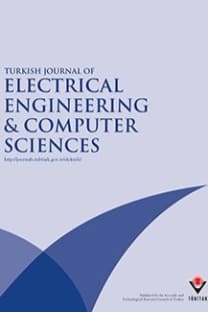Performance of exhaustive search with parallel agents
Parallel algorithms, exhaustive search, multiagent systems
Performance of exhaustive search with parallel agents
Parallel algorithms, exhaustive search, multiagent systems,
___
- J. Sanders, E. Kandrot, CUDA by Example: An Introduction to General-Purpose GPU programming, Boston, MA, USA, Addison-Wesley, 2010.
- A. Grama, V. Kumar, “State of the art in parallel search techniques for discrete optimization problems”, IEEE Transactions on Knowledge and Data Engineering, Vol. 11, pp. 28–35, 1999.
- E. Korpela, D. Werthimer, D. Anderson, J. Cobb, M. Lebofsky, “SETI@home–massively distributed computing for SETI”, Computing in Science and Engineering, Vol. 3, pp. 78–83, 2011.
- A. Siemion, J.V. Korff, P. McMahon, E. Korpela, D. Werthimer, D. Anderson, G. Bower, J. Cobb, G. Foster, M. Lebofsky, J. van Leeuwen, M. Wagner, “New SETI sky surveys for radio pulses”, Acta Astronautica: Special Issue
- on Searching for Life Signatures, Vol. 67, pp. 1342–1349, 2010.
- W. Stallings, Cryptography and Network Security: Principles and Practice, Upper Saddle River, NJ, USA, Prentice Hall, 2005.
- P.C. Cocher, “Breaking DES”, CryptoBytes, Vol. 4, pp. 1–5, 1999.
- K. Appel, W. Haken, “The solution of the four-color-map problem”, Scientific American, Vol. 237, pp. 108–121, 1977.
- Mersenne Research, Inc.“Great Internet Mersenne Prime Search”, online, available at http://www.mersenne.org/. [10] J. Nievergelt, “Exhaustive search, combinatorial optimization and enumeration: exploring the potential of raw computing power”, in SOFSEM 2000 LNCS 1963, pp. 18–35, 2000.
- J. Nievergelt, R. Gasser, F. Mser, C. Wirth, “All the needles in a haystack: can exhaustive search overcome combinatorial chaos?”, Lecture Notes in Computer Science, Vol. 1000, pp. 254–274, 1995.
- V. Kumar, “Algorithms for constraint satisfaction problems: a survey”, AI Magazine, Vol. 13, pp. 32–44, 1992.
- A. Masegosa, D. Pelta, I. del Amo, J. Verdegay, “On the performance of homogeneous and heterogeneous cooperative search strategies”, in Nature Inspired Cooperative Strategies for Optimization (NICSO 2008), Vol. 236, pp. 287–300, 2009.
- A. Masegosa, PhD, “Cooperative methods in optimisation: analysis and results”, University of Granada, Granada, Spain, 2010.
- T. Stojanovski, L. Krstevski, “On the performance of exhaustive search with cooperating agents”, ETAI Conference, Ohrid, Macedonia, 2011.
- R. Smith, R. Minton, Calculus: Multivariable, New York, NY, USA, McGraw-Hill Education, 2001.
- N. Metropolis, A.W. Rosenbluth, M.N. Rosenbluth, A.H. Teller, E. Teller, “Equation of state calculations by fast computing machines”, Journal of Chemical Physics, Vol. 21, pp. 1087–1092, 1953.
- ISSN: 1300-0632
- Yayın Aralığı: Yılda 6 Sayı
- Yayıncı: TÜBİTAK
Mostafa EIDIANI, Hossein ZEYNAL
Real-time control of an automated guided vehicle using a continuous mode of sliding mode control
A reconfigurable baseband circuit applied for WiMAX low-IF receivers
Shivakumar RANGASAMY, Panneerselvam MANICKAM
Induction motor parameter estimation using metaheuristic methods
Ali İhsan ÇANAKOĞLU, Asım Gökhan YETGİN, Hasan TEMURTAŞ, Mustafa TURAN
Uthirajoo ESWARAN, Harikrishnan RAMIAH, Jeevan KANESAN, Ahmed Wasif REZA
A new approach of nonblind watermarking methods based on DWT and SVD via LU decomposition
